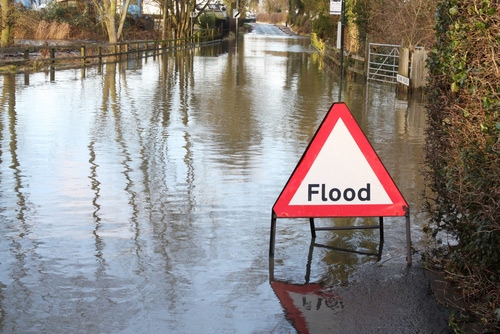
Properly balancing strategic and tactical matters is always difficult when managing a smaller business. Generally, the tactical matters – the day-to-day running of the business – will win out over strategic matters. When a disaster hits (e.g. flooding, fire, loss of a key employee) or an election takes a sudden turn, the need for strategic preparation is essential. It’s vitally important that ownership takes time (e.g., one-half day per month or quarter) to define, document, review and update strategic matters. Contingency planning should include positive matters such as new business direction as well as potentially negative issues such as the preservation of company assets.
Things that dramatically interrupt business – whether they hit the company directly, impact customers, or affect the community at large – put a focus on preservation of company assets. Company assets may be defined as:
- Physical assets such as vehicles, equipment, building, etc.
- The continuance of the company’s business operations
- The company’s owner(s), employees and any contracted staff
- The company’s reputation
In a crisis, many businesses think of assets as the ‘hard’ assets – physical assets – for which there is insurance coverage. But unforeseen events can also affect employees and perhaps the future of the business. It’s typical for companies to address insurance coverage for physical assets at the annual policy renewal meeting with the insurance agent. Things like business continuation coverage and workers’ compensation coverage can help with the continuance of a company’s business operations.
Aside from the insurance renewal meeting, it’s important for management to set aside additional time to establish or review written contingency and crisis plans. These plans do not have to be extensive; they can be as simple as action items in bullet point form. What’s important is that plans are documented, staff is trained and a staff member is assigned responsibility for each action item in the plan.
Contingency Management Plan
Contingency plans help minimize losses and prevent panic. Answering the following questions forms the framework for contingency plans:
- What happens if the business un-expectantly loses a major client? Is there a response to that client? What impact will it have on sales, marketing, and the budget?
- What happens with the loss of one or more staff members? Does cross-training need to be implemented to prevent a gap in knowledge? Who/what role will immediately fill in for the now vacant position? Does Key Man life insurance need to be put in place? Do business owners have a will? Are succession plans documented? Are confidentiality, non-compete agreements and ethics policies in place and updated? Companies must be prepared to protect intellectual property.
Crisis Management Plan
For crisis management, begin by defining types of crises/emergencies that interrupt business operations:
- What are the operational impacts of a major weather, fire or other physical events? Are evacuation plans in place? Is the business prepared if there should be an extended loss of access to the office / facility, or a lack of telecommunications / internet / electricity)? Does the business have a reliable system/process for data backup?
- Is the business prepared for a negative media event – involving the business, the business’ products or services, an employee or client of the business? A crisis management plan should make it clear who is authorized to speak on behalf of the company. In addition, it’s helpful to create a framework for communication in advance. Create a fill-in-the-blank email that may be sent to customers and/or the media as needed at what is certain to be a stressful time.
A great example is the recent alleged altercation between employees of Lucas Landscaping and a NASCAR driver. While we won’t repeat the details or comment on the accusations, suffice to say some young, non-shareholder employees driving a Lucas-owned (and decal-ed) truck caused a significant hardship to the company as a whole in the form of lost business, tarnished reputation, and negative public opinion. Given the immediate response after the incident and the poorly written press release issued by Lucas Landscaping, it’s clear they did not have a Crisis Management plan in place, nor did they have the right key members of their team ready to handle such an event.
Training
Key staff (at the minimum) must be informed about both Contingency and Crisis management plans. In the absence of training, no one knows what to do, which can lead to delayed actions, confusion, or allow the rumor mill to quickly get out of hand. Knowing that there are plans in place for contingencies and crises provides confidence for employees as well as a tangible course of action that’s ready and in place.
Key staff must also know where the Plans are located – physically or on a computer – so that a Plan can quickly be accessed when needed.
Leadership
Times of change call for strong leadership to keep the company moving in the right direction. Having plans in place and knowing what’s next makes it easier to carry on with business through unforeseen circumstances.

I’m On QuickBooks Desktop Pro or Premier…Should I Migrate to QuickBooks Online or Upgrade to QuickBooks Enterprise?
by Debbi Silva If you’re on QuickBooks Desktop Pro or Premier, you’ve likely already heard about Intuit’s plan to phase out the …

Cash Flow Forecasting 101 (and Tips for Organizations Using QuickBooks)
By: Jeff Heybruck Forecasting cash flow is one of the most difficult but impactful planning exercises a business owner can undertake. There …

Small Business Tips to Negotiate Better Payment Terms & Conditions with Customers
By: Jeff Heybruck Net 30? Yeah, right. AR from large clients can be tricky. A common refrain we hear from small business …
